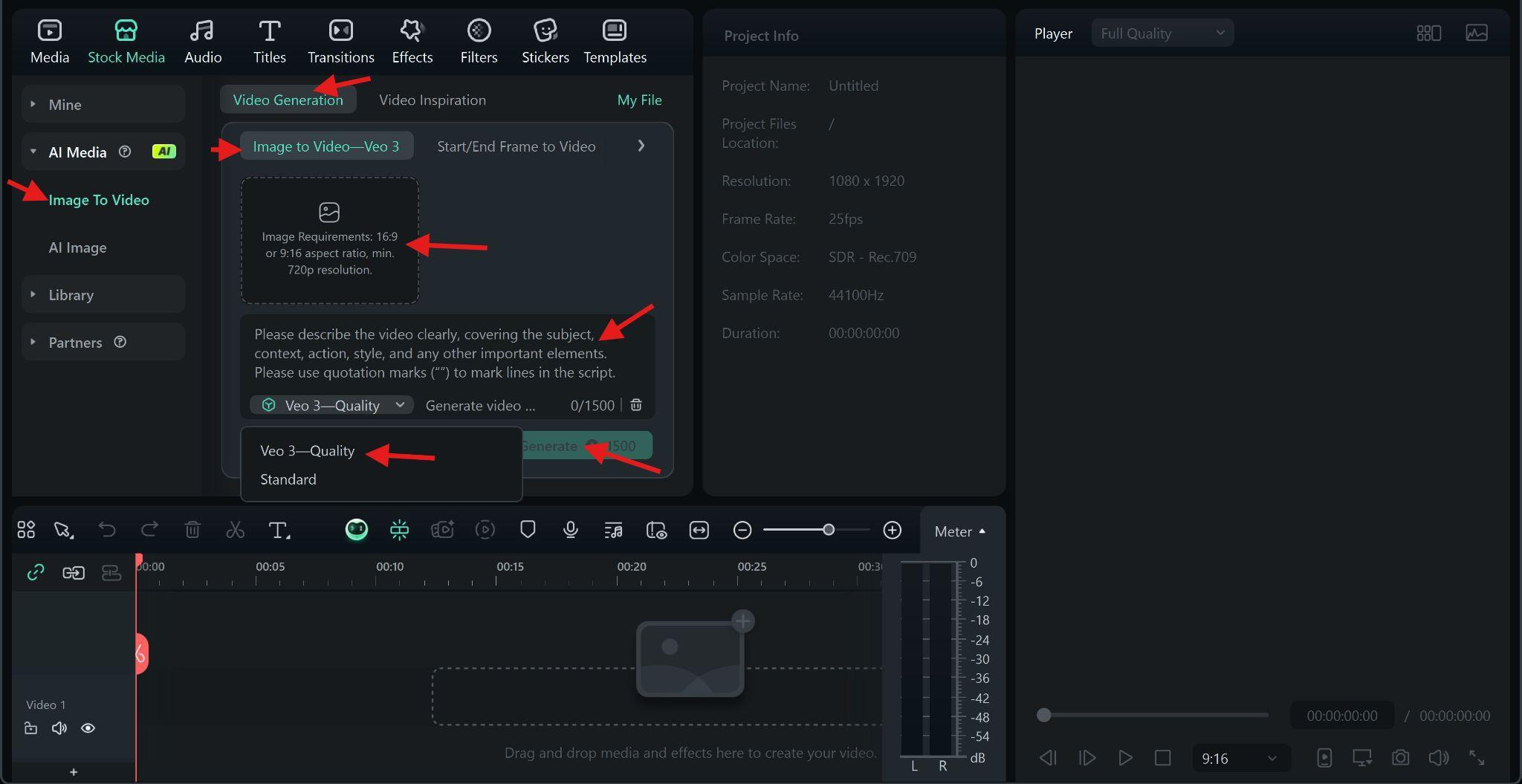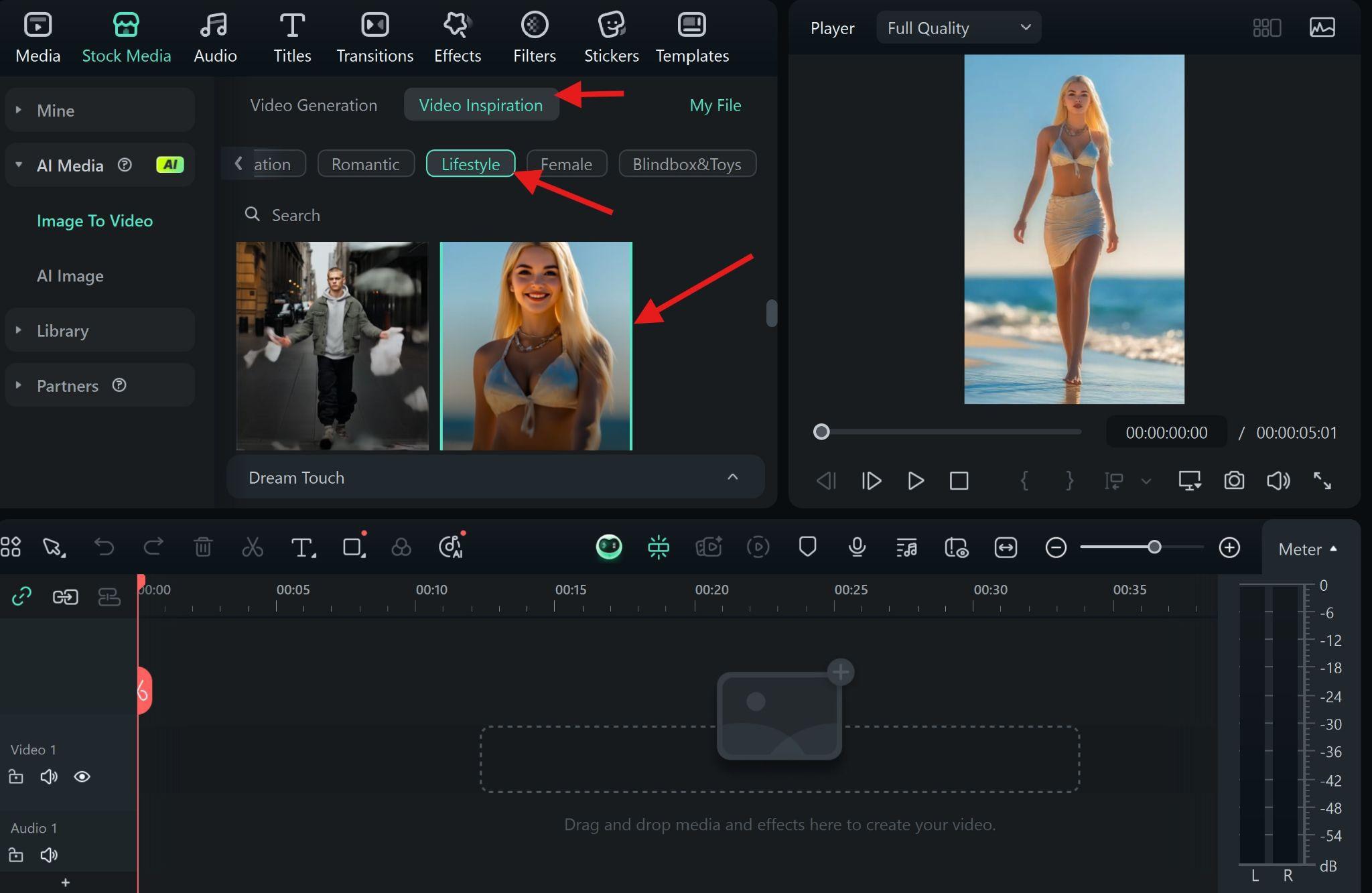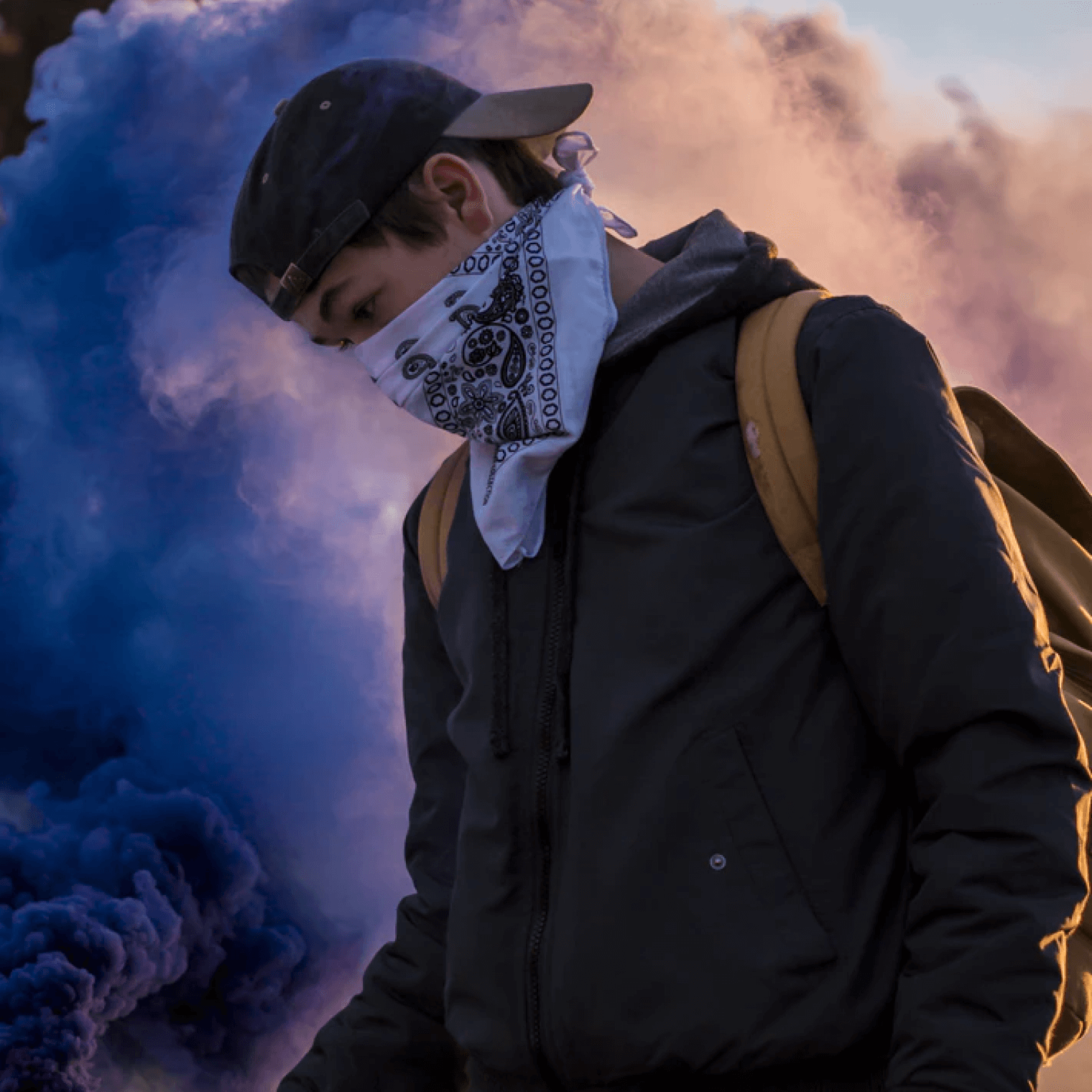In this article
NSFW stands for "Not Safe For Work" and identifies online material that may be inappropriate in professional or public settings. Many people encounter explicit or sensitive content during daily browsing:
- About 50% of all internet users have accessed adult content.
- 15% report viewing such content daily.
- Pornography accounts for roughly 30% of global internet traffic.
NSFW meaning and usage have changed rapidly, especially with the growth of AI-generated explicit material. Recent advances in AI allow users to create realistic images and videos, raising new ethical and safety concerns. Readers should recognize both the risks and responsibilities of sharing or viewing NSFW content online.
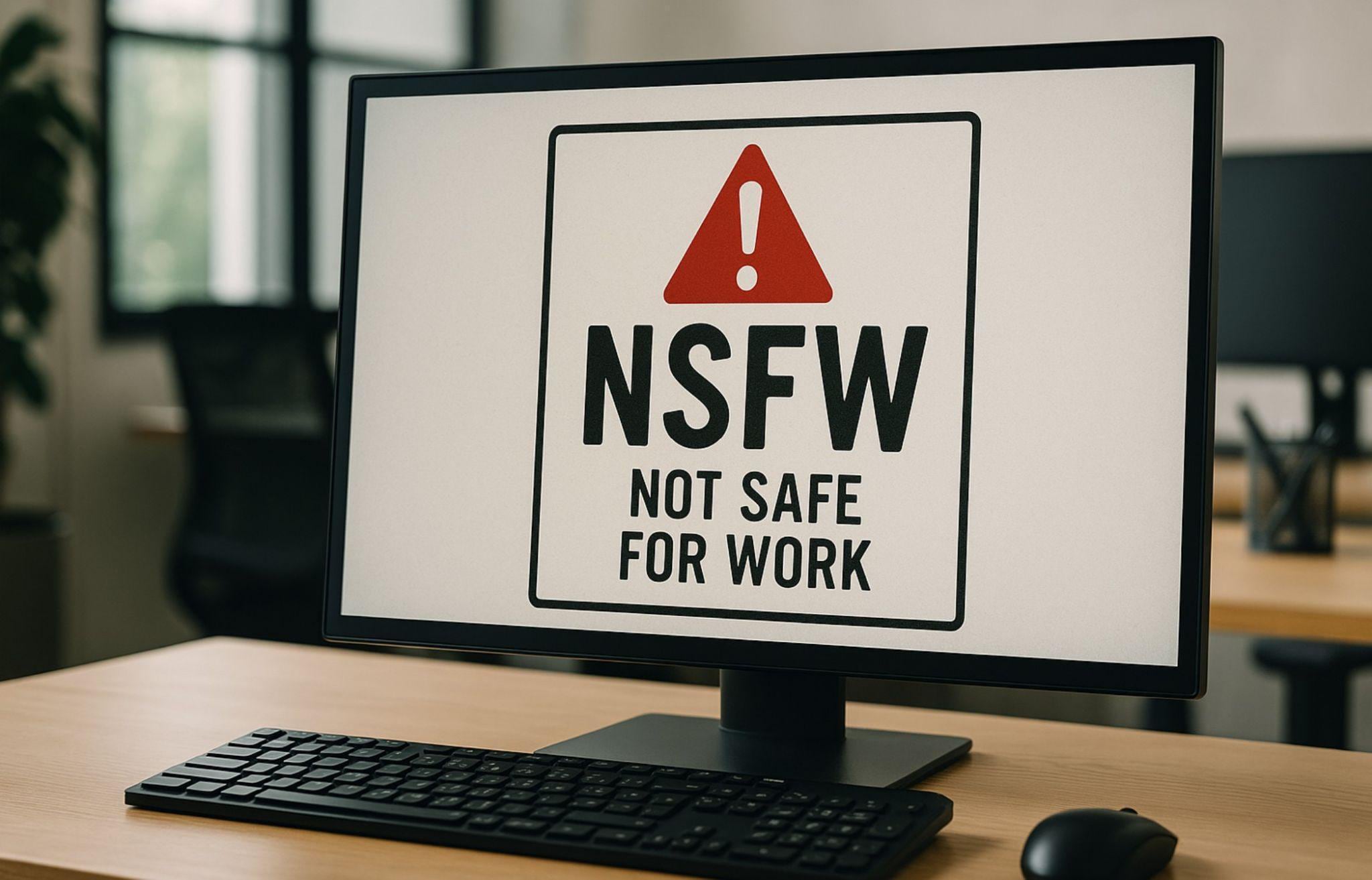
NSFW stands for "Not Safe For Work" or "Not Suitable For Work." This acronym warns people that certain online content may not be appropriate in professional or public settings. The Avira blog describes NSFW as a label for posts or media that users should avoid during working hours or on work computers. These warnings often appear on social media and internet platforms to help users avoid suggestive, nude, adult, vulgar, or violent material. Oxford Dictionaries Online also defines NSFW as a term used in electronic communication to indicate that a web page or website contains explicit sexual material or other adult content. NSFW meaning and usage have become widely recognized as a way to protect people from accidentally viewing inappropriate material in the wrong environment.
Key Takeaways
- NSFW means 'Not Safe For Work' and warns about content that may be inappropriate in public or professional places, like sexual or violent material.
- Many online platforms use NSFW labels and AI tools to detect and manage explicit content, helping users avoid unwanted or harmful material.
- Viewing or sharing NSFW content at work can cause serious problems, including job loss and legal issues, so it is best to avoid it during work hours.
- Users should protect their privacy and safety by using content filters, strong passwords, and safe browsing tools when accessing online material.
- AI technology is changing NSFW content by creating realistic images and videos, raising new ethical concerns that require careful attention and regulation.
Origins
The history of NSFW's meaning and usage shows how internet culture has changed over time. The term first appeared in the early 2000s on community websites like Fark and Slashdot. These sites used NSFW to warn users about content that could cause problems in work environments. The table below highlights key points in the development of NSFW:
| Aspect | Details |
| Emergence | Early 2000s |
| Popularized By | Community websites like Fark and Slashdot |
| Purpose | To warn users about inappropriate content in work environments |
Before NSFW, people sometimes used the term NFBSK ("Not For British School Kids") around 1998 on forums like Snopes.com. By 2000, NSFW appeared in internet jargon databases, and Urban Dictionary added an entry in 2003. Merriam-Webster officially included NSFW in its dictionary in 2015. NSFW meaning and usage have grown from simple warnings on forums and emails to a universal marker in digital culture. Today, social media platforms like Reddit and Twitter require or encourage users to label NSFW content. Some platforms even blur or hide this material automatically. NSFW meaning and usage now cover not only sexual content but also graphic violence, strong language, and controversial topics. The term helps maintain respect and decorum in online communication.
Related Terms
Many words and phrases relate to NSFW meaning and usage. These terms help describe the types of content that might need a warning. Some of the most common related terms include:
- nude, nudity, sexually, horny
- fetish, porn, pornographic, sexy, lewds, onlyfans, explicit, adult, erotic, hentai, kinky, bdsm, pornography, vulgar, romantic, pervy, pornstar, sex tape, mature, sexualized, erotica, risque, boudoir, raunchy
These words often appear in discussions about explicit or adult content. They connect to NSFW through similar themes or common usage in online spaces.
Other important related terms include:
- SFW (Safe For Work): This label marks content as appropriate for viewing in professional or public settings. SFW is the opposite of NSFW.
- NSFL (Not Safe For Life): This warning signals extremely graphic or disturbing material, such as severe violence or gore. NSFL content goes beyond NSFW by indicating that the material may be upsetting even outside the workplace.
NSFW meaning and usage continue to evolve as digital platforms and online communities grow. The term now covers a wide range of content and plays a key role in internet etiquette and safety.
Content Types
Sexual Content
Sexual content stands as one of the most common categories labeled NSFW. This type includes nudity, sexual behavior, and explicit imagery. Platforms often use detailed guidelines to define what counts as sexual content. For example, X’s Adult Content Policy lists full or partial nudity, close-ups of genitals or breasts, and explicit sexual acts as NSFW. Simulated sexual activity, use of sex toys, and bodily fluids in a sexual context also fall under this category. However, educational, medical, or artistic nudity may not always receive the NSFW label. The main goal is to warn users about material intended to cause sexual arousal or that could be inappropriate in public or work settings.
| Level | Content Description |
| PG | Safe for work, no inappropriate content |
| PG-13 | Revealing clothing, sexy attire, light violence or gore |
| R | Adult themes, partial nudity, graphic violence |
| X | Graphic nudity, adult objects and settings |
| XXX | Overtly sexual or disturbing graphic content |
Violence and Gore
Violent and gory content also receives the NSFW label. This includes depictions of blood, injuries, abuse, or death. Social media platforms use both human moderators and AI systems to detect and remove such material. They set clear rules, such as banning images that show violence with the intent to shock or disgust. Moderation tools scan for keywords and analyze images to ensure compliance. These efforts help protect users from harmful or traumatic visuals.
Strong Language
Strong language refers to the use of profanity, hate speech, or offensive terms. Many platforms flag posts with excessive swearing or slurs as NSFW. This helps maintain a respectful environment and shields users from unexpected or upsetting language. Some sites allow users to filter out strong language, while others automatically blur or hide it.
Disturbing Material
Disturbing material covers a wide range of sensitive topics. This includes graphic violence, explicit adult content, hate imagery, and visuals of self-harm or exploitation. Content about controversial subjects, such as tragedies or discrimination, may also be flagged as NSFW. Platforms aim to protect users from content that could cause emotional distress or discomfort.
Platform Practices
Social Media
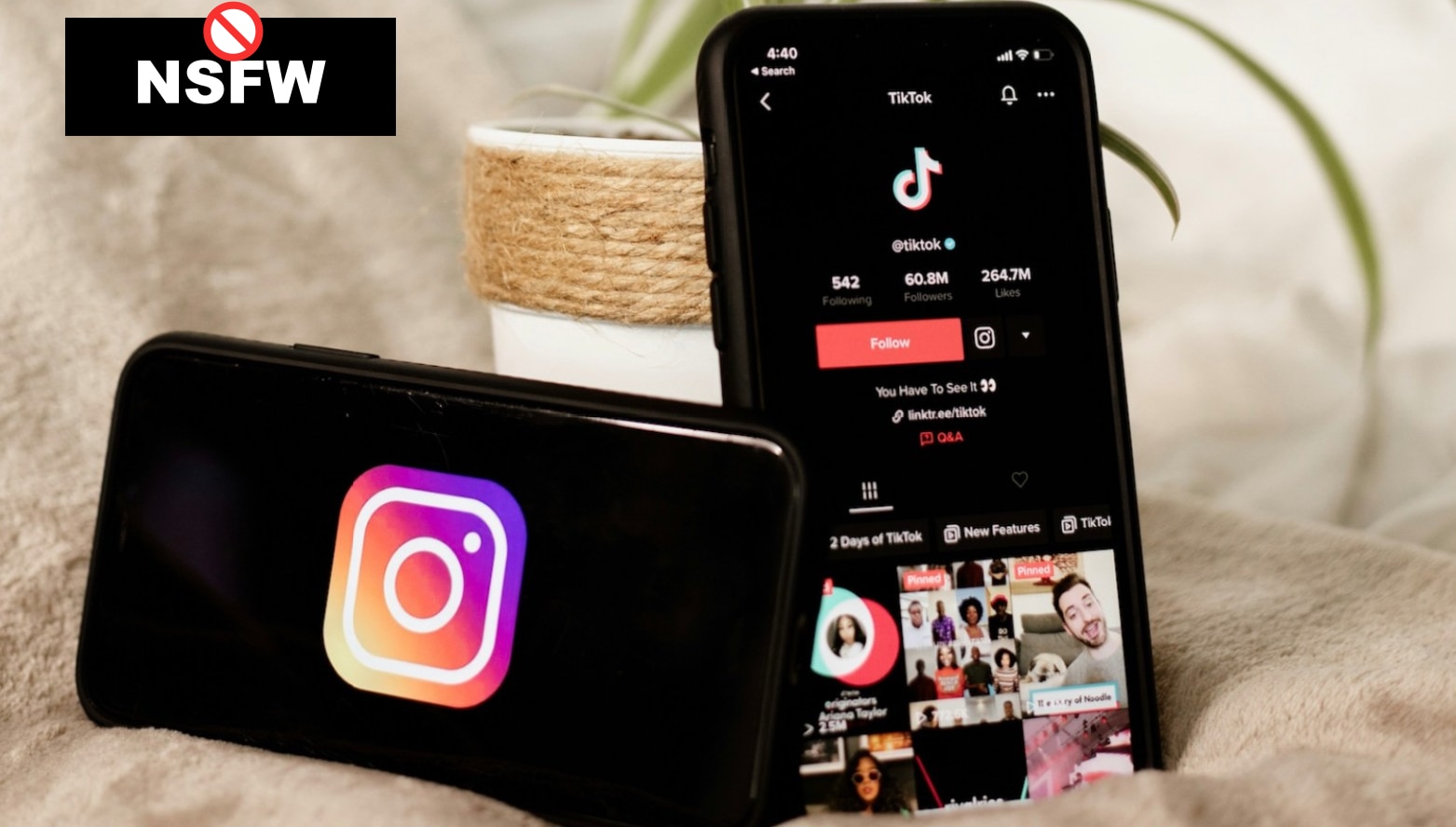
Major social media platforms use AI to scan images and videos for nudity, violence, and explicit material, handling billions of daily uploads. Human moderators review flagged content to ensure accuracy, especially in sensitive or culturally complex cases, while AI systems are trained with diverse data and user feedback to reduce bias. Some platforms anonymize images during scanning, balancing safety with respect for user rights.
Forums and Messaging
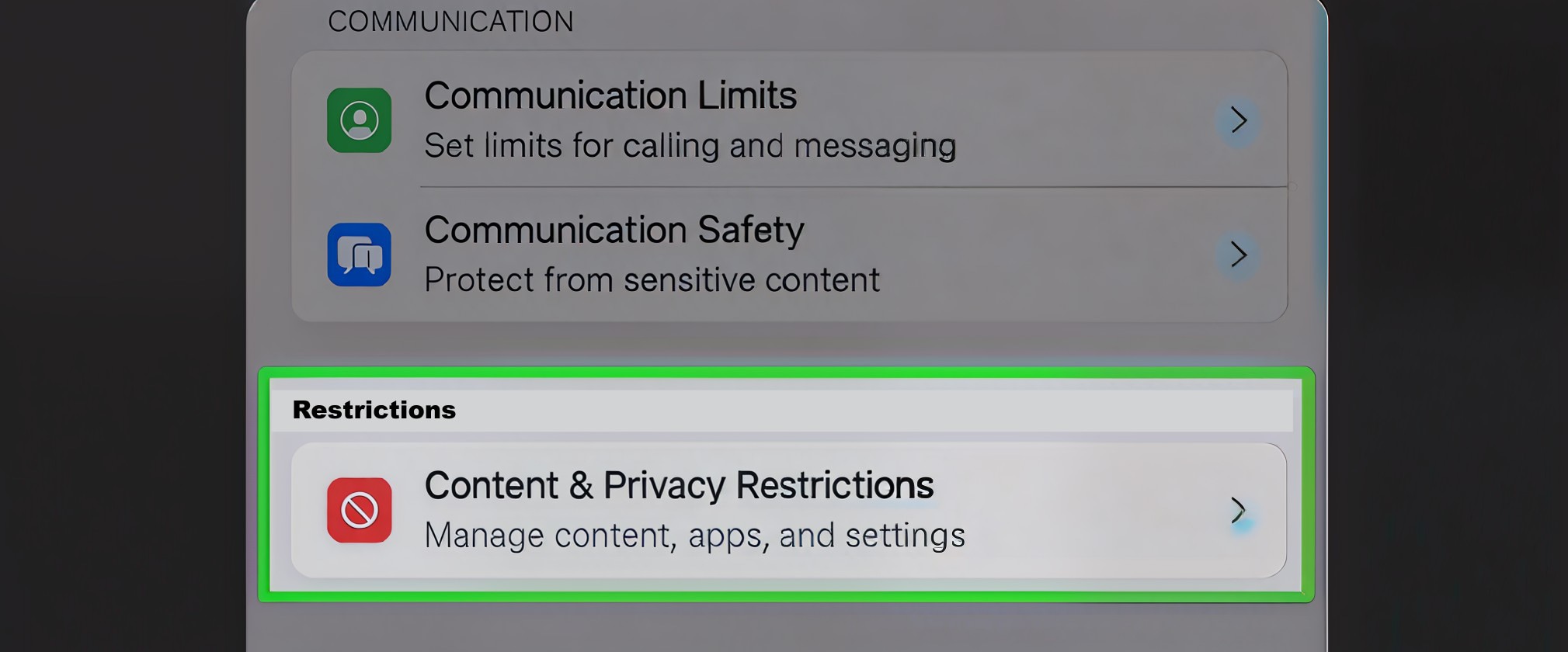
Online forums and messaging platforms set age limits and rules for NSFW content, banning anything illegal or harmful. They use filters, privacy settings, and moderators to control what users see and quickly take down violations. Many rely on private chats, admin oversight, and short-term data storage to protect user privacy and keep communities safe.
Dating Apps
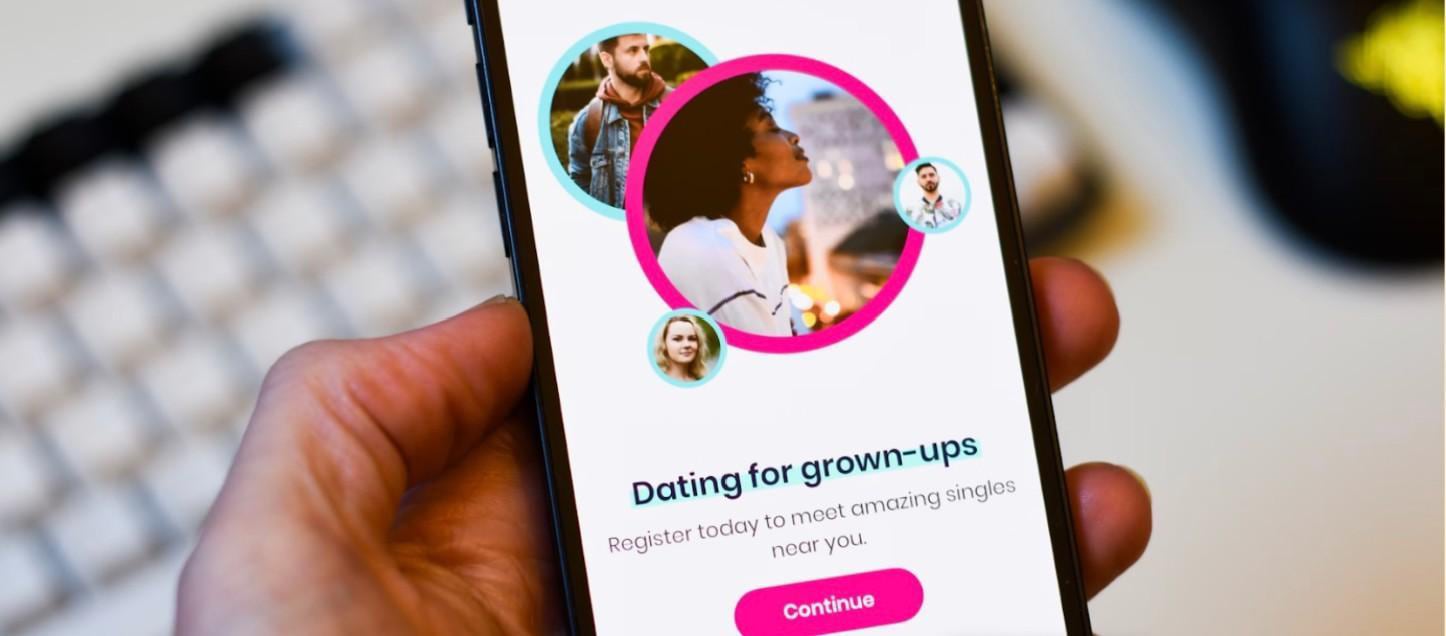
Dating apps use machine learning and filters to identify and remove harmful NSFW content in real-time. Apps verify user age with documents or AI to prevent minors from accessing adult content. Moderation methods include pre-moderation, post-moderation, and community reporting. These steps help users feel safe while connecting online.
Content Controls
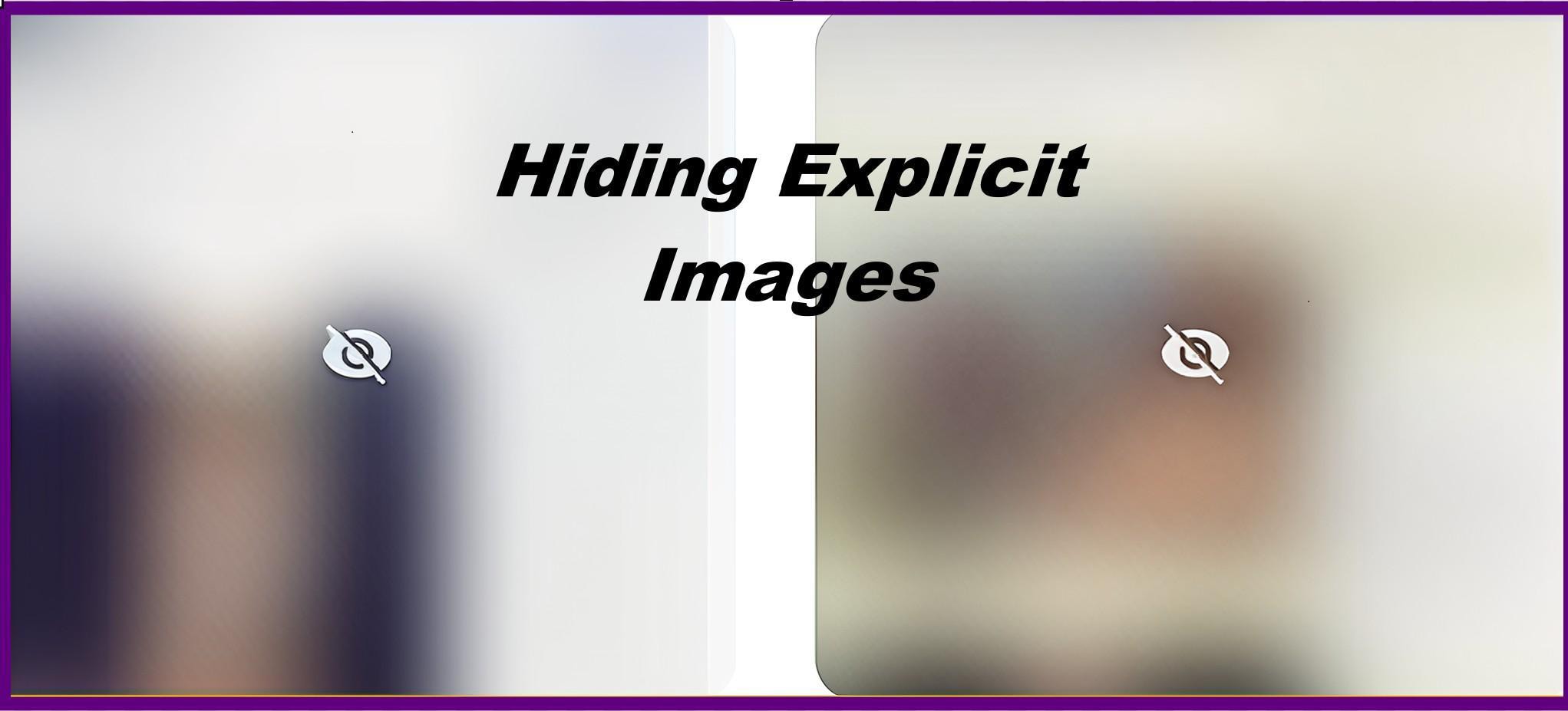
Many platforms offer content control tools to filter NSFW material. AI moderation APIs like Google Cloud Vision and Microsoft Azure AI Vision detect and classify explicit images. These tools use machine learning and computer vision to scan content automatically. Platforms like Instagram, YouTube, and Reddit use these filters to flag inappropriate posts.
Risks and Safety
Professional Risks
Viewing or sharing NSFW content at work can have serious consequences. Many companies have strict policies against accessing explicit material on work devices or during office hours. Even a single incident can damage a person’s reputation or result in job loss. Employees risk disciplinary actions such as warnings, suspensions, or termination. Sharing NSFW content may offend colleagues and cause emotional distress. Legal risks also exist, especially if explicit material is shared with minors. Company culture and workplace monitoring often determine the severity of these repercussions. To avoid problems, employees should never view or share NSFW content at work. If unsure about the appropriateness of content, the safest choice is to avoid it entirely.
Cybersecurity
Cybercriminals often exploit NSFW content to target users. Sextortion scams and social media manipulation are common tactics. Offenders may use catfishing, hacking, or personal information to coerce victims. These threats affect people across multiple platforms and often cross state or national borders. The table below highlights key aspects of these cybersecurity risks:
| Aspect of Exploitation | Details |
| Social media manipulation in sextortion cases | 83% overall; 91% with minors |
| Multiple platforms used | 41% of reports |
| Victim demographics | Majority female; average age 15 years |
| Cross-jurisdictional cases | 63% interstate; 21% international |
| Common tactics | Catfishing, hacking, coercion |
Privacy
Accessing or sharing NSFW content online exposes users to privacy risks. Many age verification systems require sensitive personal data, such as government IDs or biometric information. Data breaches have exposed names, birth dates, and images of identity documents. These incidents can lead to identity theft, blackmail, or phishing. Weak legal protections and enforcement make these risks worse. Even systems that use digital signatures still expose users’ IP addresses, reducing anonymity. VPNs can bypass some restrictions, but privacy concerns remain high. Many users avoid sites with strict verification laws due to the fear of data leaks.
Safe Browsing
Users can take practical steps to protect themselves when browsing online. Setting up device restrictions helps block adult sites and limit exposure to NSFW content. For example:
- Open device settings and enable content restrictions.
- Set a passcode to prevent unauthorized changes.
- Limit adult websites and customize allowed or blocked URLs.
- Regularly review and update these settings.
- Use third-party tools to block explicit content across browsers.
Regularly updating filters and using privacy tools like VPNs can further enhance online safety. Always use discretion when browsing or sharing content.
Trends and Culture
Meme Culture
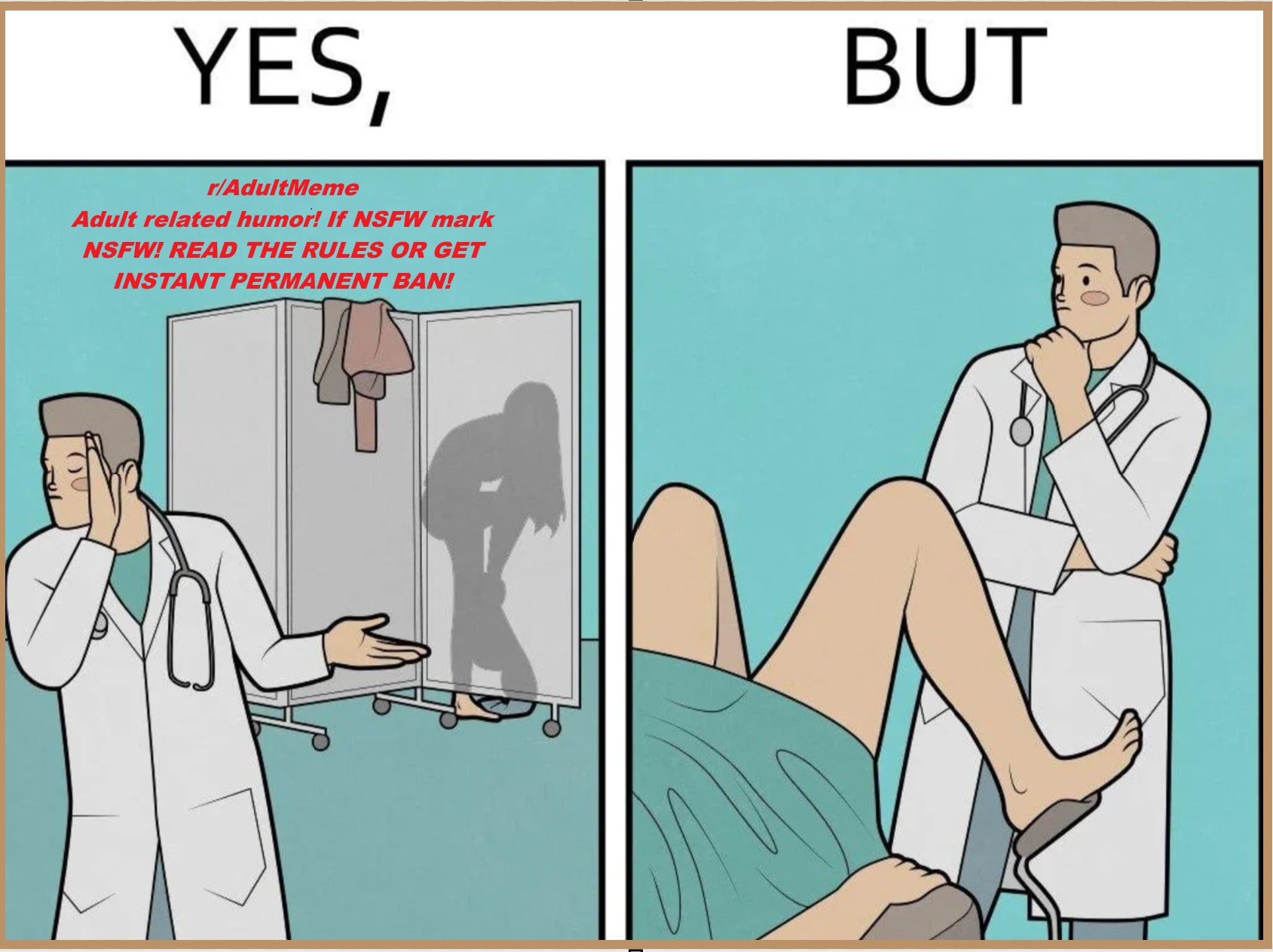
NSFW content has become a major part of meme culture across platforms like Reddit, Discord, TikTok, and even X (formerly Twitter). Reddit hosts popular subreddits that focus on adult-themed humor. Discord allows users to share NSFW memes in private servers, while TikTok and X have seen trends that push boundaries with suggestive or humorous content. As these memes spread quickly, users should always check and follow the platform's rules before sharing or reposting.
Gender and Identity

The Media Practice Model explains that engagement with sexual content depends on media exposure, personal beliefs, and daily experiences. According to research, many adolescents produce or consume sexualized content that matches their offline gender expectations. On the other hand, media, including NSFW material, helps form beliefs and attitudes about gender roles.
AI-Generated Content

The ability of AI tools to generate images, videos, and interactive stories tailored to user preferences brings both opportunities and challenges. Deepfake pornography and non-consensual content have become serious issues. On the positive side, AI can support sexual education and therapy. Tools like Wondershare Filmora (video editing software integrating AI) give creators the power to produce and edit content responsibly.
How to Use a Safe NSFW Video Editor Alternative
Wondershare Filmora is a safe NSFW tool that helps you make content safe for platforms while handling NSFW material responsibly. This all-in-one video editor recently leveled up with its Image-to-Video feature, now powered by Veo 3, one of the most advanced AI video models.
Unlike NSFW AI generators that toe the line with risky or explicit content, Filmora keeps things safe for platforms like YouTube, TikTok, and Instagram. So, whether you're making educational content, romantic scenes, or something entirely wild, Filmora gives you the tools to bring any idea to life. But it will block any video generation not in line with the NSFW policy. Below is how to use this tool.
